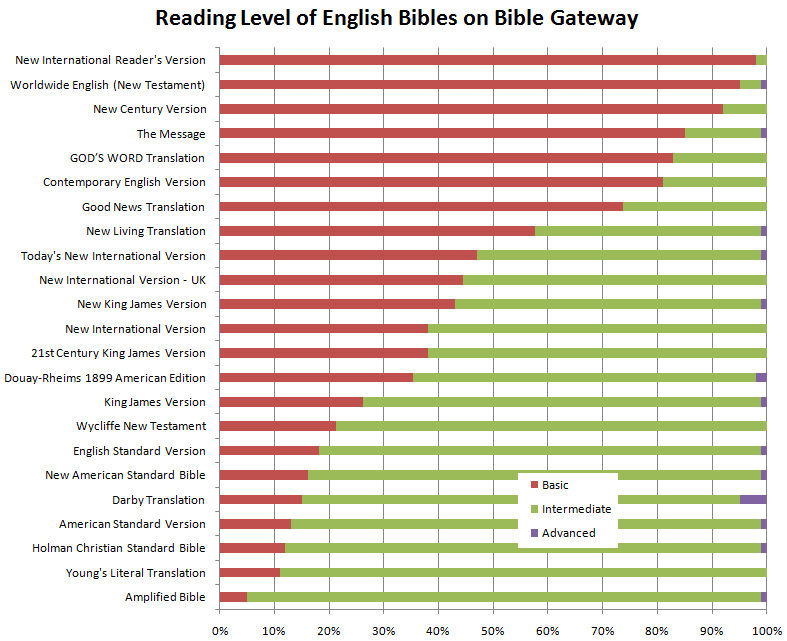Google recently introduced a “Reading Level” feature on their Advanced Search page that allows you to see the distribution of reading levels for a query.
If we constrain a search to Bible Gateway and restrict URLs to individual translations, we get a decent picture of how English translations stack up in terms of reading levels:

Caveats abound:
- URLs don’t have a 1:1 correspondence to passages, so some passages get counted twice while others don’t get counted at all.
- Google doesn’t publish its criteria for what constitutes different reading levels.
- These numbers are probably best thought of in relative, rather than absolute, terms.
- Searching translation-specific websites yields different numbers. For example, constraining the search to esvonline.org results in 57% Basic / 42% Intermediate results for the ESV, massively different from the 18% Basic / 80% Intermediate results above.
Download the raw spreadsheet if you’re interested in exploring more.
That’s an interesting way to approach such a comparison. I just recently finished a readability graphic that lets you slice and dice things different ways, but for just one translation http://soulliberty.com/View.php?ID=1047. I wasn’t aware of this new tool from Google…maybe I’ll check it out. Perhaps with the right websites or refined search methods it could be made a bit more accurate.